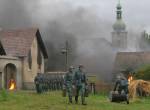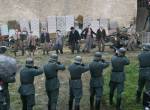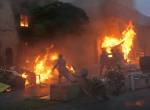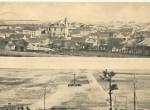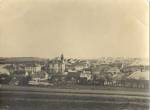
The educational journey of the robber Stetka
A nature trail around the surroundings of Štětí for the whole family, introducing the history and picturesque nature, industry and agriculture of Štetsko. The legendary robber Štětka and his four-member team are guiding the tour, giving information on a marked circuit starting from
In the old days of the Thirty Years' War, the robber Štětka was the master of the deep forests, fields and hillsides around the town of Štětí. Today, his home is the former Mordloch Cave, hidden away from people in the middle of the Stračen forests. Who knows him in the region. He protects the poor and honest, and justly punishes dishonesty and avarice. He has walked this land many times. He knows every road and footpath here.
During your adventurous journey with the robber Stetka you will come across educational boards that will tell you all about the history, nature, fauna and flora, industry and agriculture of the local region or visit the mythical cave Mordloch of the robber Stetka. You can also try out a discovery competition Following the footsteps of the robbers or robber geocaching.
Stops
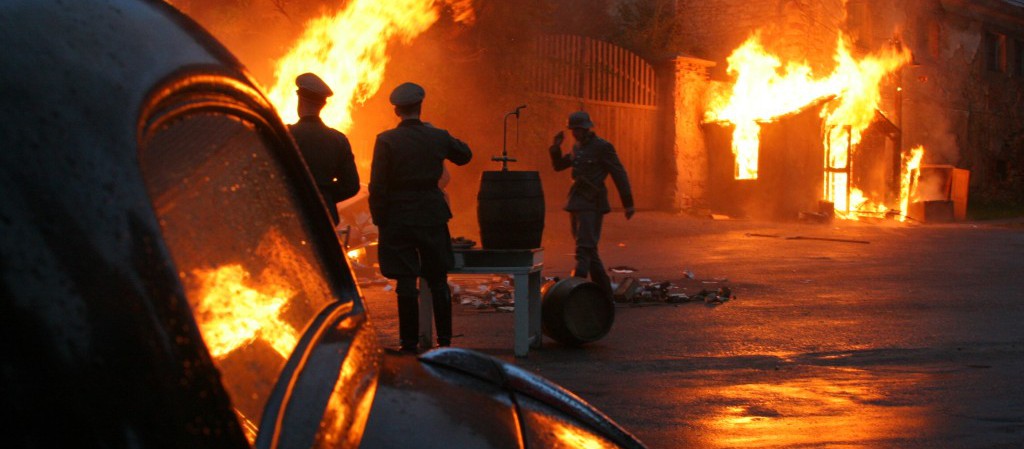
Chcebuz
CHCEBUZ – MOVIE LIDICE
Chcebuz and Lidice
In the summer of 2010, Chcebuz was transformed into the film Lidice. The filmmakers chose the village for the filming of the historical film because of its similarity to the original Lidice. The latter is one of the most poignant memories of the atrocities of the Second World War. The main roles in the film were played by Karel Roden, Zuzana Fialová, Zuzana Bydžovská, Roman Luknár and Jan Budař.
"Chcebuz was chosen because of its extraordinary similarity to the real Lidice, for example, the elevated Baroque church in the centre of the village or the old school building," said Adam Dvořák, the film's producer.
Citizens of Chcebórz, Štětí and other villages of the region participated in the filming as extras. "I have only the best memories of working with the local people cast as extras. The filming, when the Lidice inhabitants are expelled to the village square, was emotionally demanding and strong. More or less all of us succumbed to the power of the situation at that moment, and many of the women actually cried for real. The experience of what the people in Lidice had to go through was so strong that we took it as reality," said Petr Nikolaev, the director of the film.
Film Lidice
The burning of Lidice was the only officially acknowledged act of genocide by fascist Germany, which shocked the whole world during the war.
The film was based on a screenplay originally titled Nocturne by the acclaimed writer and historian Zdenek Mahler, and in 2007 it was awarded the Czech Lion as the best unrealised screenplay.
Although, or perhaps because, it is an extraordinary film substance, the road to the first flap was thorny. Thanks to the helpful attitude of some Czech companies and the generosity of Czech municipalities, which were not indifferent to the fate of the film, after many peripetias, filming began on 26 July 2010.
The film Lidice is based on real events. It tells the story of people just like us - they knew how to love, how to be unfaithful, how to pretend, how to rejoice, how to flatter, how to be honest. The film is based on three key, intertwining stories that take place against the backdrop of the tragic event of the burning of Lidice.
The first one is about an unfortunate accident, when the father František Šíma (Karel Roden) accidentally kills his son in an argument. He is punished for this not only by being sentenced to prison, thanks to which he is the only Lidice man to survive, but also by the contempt of the village people and his own remorse. The second depicts the fate of the letter that became the pretext for the actual act of burning Lidice. Behind it lies a story of love, lies and false heroism. The third presents the image of the Lidice gendarme Vlček (Roman Luknár), a picture of personal fear, personal responsibility and morality, the relationship to the system, but also of whether it is a real prize to survive when the price is the loss of one's own dignity and conscience.
Lidice
The occupation of Czechoslovakia prepared Lidice for a tragic change. In order to crack down hard on the growing anti-fascist resistance, SS-Obergruppenführer and Police General Reinhard Heydrich was appointed acting Reich Protector in September 1941. His brief tenure resulted in the arrest of 5,000 anti-fascist resistance fighters or their collaborators. The martial law courts were in full operation, and the occupiers did not stop at murder without any trial, the purpose of which was to spread an atmosphere of fear throughout the country.
The fate of the people of the Czech nation was shaken by the decision of the Czechoslovak government in London - the plan to assassinate Reinhard Heydrich. The attack by Czechoslovak paratroopers, in which Heydrich was mortally wounded on 27 May 1942, brought events that thrilled the whole world.
A vague letter to a female employee of the Slánská factory, seized by co-owner F. Pálá, aroused the suspicion of the Gestapo in Kladno that the assassination was connected to the Horák family in Lidice, as their son was a member of the Czechoslovak foreign army in Great Britain. Although no compromising materials, weapons or radio were found during the investigation or searches, the German authorities needed to carry out an act of revenge for the death of "an outstanding man of the German nation". They decided to carry out this brutal act on the inhabitants of Lidice.
The fate of the small village of 503 inhabitants began to be fulfilled a few hours after midnight on June 10, 1942. By order of K. H. Frank, 173 Lidice men were shot in the garden of Horák's farm on that fateful day. The women and children were taken to the gymnasium of what is now the Kladno Gymnasium, but after three days they were forcibly separated. Except for the children selected for Germanization and the children under one year old, all were mercilessly poisoned with exhaust fumes in specially modified cars in the Nazi extermination camp in Chełmno nad Nerrem, Poland. The women were assigned to fight for their lives in the Ravensbrück concentration camp.
In addition to immediate or slow physical liquidation in concentration camps, the Nazis proceeded to liquidate the village as such. The houses were first burned and then destroyed with plastic explosives. The extermination squad did not stop at the destruction of St. Martin's Church, nor did it stop at the destruction of the last resting place - the local cemetery. All the landscaping was completed in 1943, and all that was left of the living village was a bare, silent plain. Until the end of the war, only signs prohibiting entry marked the area of Lidice.

